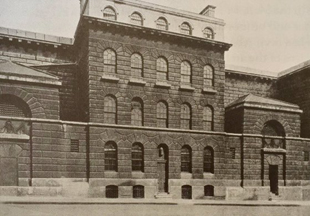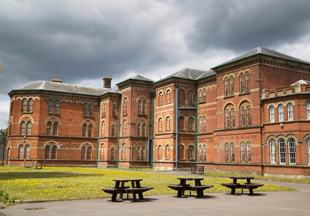Jack the Ripper Overview
In the year 1888, a mysterious, cold-blooded serial killer captivated the attention of Londoners during his year-long killing spree. This is the story of "Jack the Ripper", a man who Scotland Yard never identified – never could identify, and his five female victims. Not much is known for certain about the man who committed these violent murders, but the case information has been studied and discussed in more than 100 non-fiction books since the murders occurred more than 125 years ago.
The murders were committed during a time of extreme social and economic unrest in London. Due to a sharp increase in Irish and Jewish immigration, the Whitechapel area of London became extremely overcrowded. The police were unable to keep complete control over the district and it became known for its dangerous characteristics. Prostitution, robbery, rape and murder were commonplace during this period. In fact, there were more than 1200 prostitutes serving this small area, working in more than 60 brothels. Among these prostitutes is where Jack the Ripper found his victims.
While there has been much debate about the total number of victims Jack the Ripper killed, most experts agree that there were only five. By studying the way in which these women were killed, when they were killed, who the victims were, and what we now know about serial killers, we can determine the type of person that Jack the Ripper might have been. Jack the Ripper likely had the following characteristics – most of which explain why the police were never able to locate him:
• He appeared very normal in his appearance and mannerisms. He was unlikely to be a "raving lunatic" as most people thought at the time.
• He probably held full-time, regular employment, since the murders were committed on weekends and holidays.
• He was likely between 20-30 years old. Most modern serial killers fall into this age group, and this also is backed up by witness accounts.
• Most criminals, even serial killers, operate within a territory that they feel comfortable in. This leads us to believe that Jack the Ripper lived in Whitechapel, at least during the murders. This is also backed up by the discovery of a bloody piece of one of his victim's clothing items. The bloody item was discovered in the direction of the center of the Whitechapel area, which led investigators to believe that he lived there.
His murders were done very carefully, as he took care to not bloody himself unnecessarily. After choosing a victim, he would solicit her for her services as a prostitute. Instead of intercourse, he would strangle the woman and let her fall to his side. While she was lying on her side, he would cut her throat, bending over from the opposite side or her, letting the blood splatter the opposite direction from where he was sitting. He would often remove an organ, such as the heart or kidney, or even the uterus.
We don't know for sure who Scotland Yard's suspects were, since the case files are still censored – purportedly because of concerns for the safety of descendants of those involved in the investigation. The media has not been hindered by the same concerns, however. The Jack the Ripper scandal was the first time a crime story made world-wide headlines, and it has continued to do so. Even in the internet age, new stories about Jack the Ripper get front page spots on major websites.
Until the Scotland Yard files are released without any censorship, the legacy of Jack the Ripper is likely to live on indefinitely . For better or for worse, he will continue to inspire countless fiction and non-fiction writers to explore the details of the case and time period.
Jack the Ripper Overview
04/09/2016






Comments